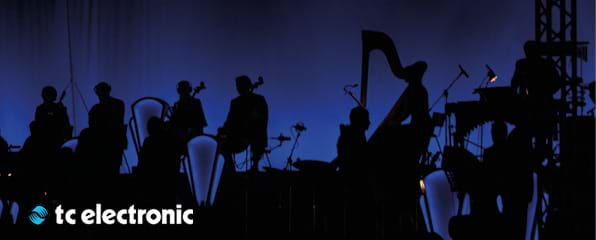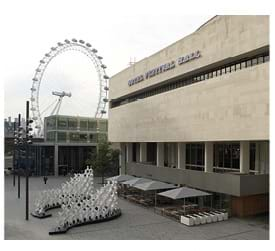
 Currently the landscape of audio production and reproduction is changing since 3D audio is starting to become common place in cinemas and homes where the Dolby Atmos format is available. Dolby Atmos utilises surround speakers in the horizontal plane but also above the listener. The BBC is also moving forward researching ways of delivering a more immersive listening and viewing experience into the homes of viewers whether that is utilising 3D speaker arrays or over headphones.
Currently the landscape of audio production and reproduction is changing since 3D audio is starting to become common place in cinemas and homes where the Dolby Atmos format is available. Dolby Atmos utilises surround speakers in the horizontal plane but also above the listener. The BBC is also moving forward researching ways of delivering a more immersive listening and viewing experience into the homes of viewers whether that is utilising 3D speaker arrays or over headphones.
Making content for these types of systems requires new tools especially in the case of Dolby Atmos where there can be a large number of speaker channels to cope with. As an example, if you wanted to recreate the acoustic of a church you would have to have reverberation for up to 64 channels of speakers. Traditionally this would mean a large number of reverb effects units would be required, in addition, trying to route the inputs and outputs of all of these processors would be nearly impossible.
In order to meet the demand of the new 3D surround sound formats TC Electronic have developed a 24 channel reverb processor called Reverb Twentyfour.

This is a 1U 19” rack unit with the capability to process up to 24 channels and also control a number of parameters using the TC Icon software controller or via the Icon hardware remote, in addition more units can be linked together to cater for even more channels. The Icon remote allows the user to control all of the outputs simultaneously, this is very important in multichannel work especially when trying to create a diffuse soundfield as it is necessary to control the reverberation so that the energy is spread evenly around the listener.
Canford is the exclusive distributor of TC Electronic broadcast and professional audio equipment in the UK. The product range includes precision audio metering, monitor controllers, loudness management, audio delays and digital effects units.
The Reverb Twentyfour is a specialist unit, developed for highly complex 3D surround workflows. As a result, the team at Canford was intrigued when they were contacted by Managing Director of RNSS Limited, Richard Nowell regarding the purchase of a Reverb Twentyfour.
 RNSS Limited provide a number of services which include audio rental, consultancy and in house equipment repair. They are based in the Southbank Centre in London. Not only is their base in the Southbank Centre but they also own and maintain the audio system within the centre. RNSS work with a number of orchestras providing specialist sound engineering services, some of the orchestras include the London Symphony Orchestra and Symphony Orchestra of India which involves international touring.
RNSS Limited provide a number of services which include audio rental, consultancy and in house equipment repair. They are based in the Southbank Centre in London. Not only is their base in the Southbank Centre but they also own and maintain the audio system within the centre. RNSS work with a number of orchestras providing specialist sound engineering services, some of the orchestras include the London Symphony Orchestra and Symphony Orchestra of India which involves international touring.
Musicians Comfort
Richard utilised the Reverb Twentyfour in order to make his life easier since he can now ship a 1U unit which reduces the cost, footprint and reduces the set up time. It also simplifies the management and processing of large numbers of channels. Recently he used the TC Reverb Twentyfour with the London Symphony Orchestra in Vietnam and in addition to recreating a virtual acoustic for the orchestra he also uses the speakers in a subtle way to provide fold back in order that musicians on opposite sides of the stage from their counterparts can hear each other. He also commented that the orchestra were very pleased with the acoustic that is created to the point that they had forgotten that he was using the Reverb Twentyfour. Richard also commented that he refers to the TC Electronic reverb as “fairy dust” due to the fact that when it is used “it brings everything to life in an indefinable but amazing way”.
Of general importance to musicians is the ability to be comfortable and to be able to hear other members in order to provide a good performance and thus an excellent listening experience for the audience. This is even more important in classical music where in terms of ensemble playing they must be able to hear each other and also receive feedback from the acoustics of the space in order to provide support for their instrument.
Concert Hall Acoustics
Most concert halls have specially shaped stage shells which assist in providing musicians with the aforementioned needs. There are many different performance spaces around the world, however not all of these halls are designed for classical music performance, or even for the style of classical music being played. This can be problematic if an orchestra has to perform in such an environment since the musicians will not perform to the best of their abilities and ultimately this will impact on the paying audience. Richard goes to great lengths in order to ensure that the orchestras he works with are comfortable and can play at their best by creating a virtual acoustic suited to the needs of the musicians and the style of music. This involves utilising microphones, of which there can be as many as 32, hung overhead to provide as even a coverage as possible. The signals are then routed to individual reverberation processors and then finally routed back to loudspeakers placed all around and above the orchestra. Before buying the Reverb Twentyfour Richard used a number of separate reverb processors, like the System 6000, however management and routing of large numbers of channels is very cumbersome, not to mention the set up time and freight costs.
Some people might ask why do you need a large number of loudspeakers placed around and above the orchestra? This is important in order to recreate the pattern of reflections coming from all directions similar to that in a real room and be able to control this seamlessly to recreate a natural and convincing soundfield. Especially the early and late reverberant energy direction in relation to the musicians. Furthermore, when processing and reproducing audio signals which have similar spectral content and reproducing these over a large number of loudspeakers this can be problematic as it can lead to audible artefacts which may include phasing or coloration of the soundfield, however the Reverb Twentyfour ensures that each of the output channels are slightly different in order to avoid correlation between channels. Ultimately, most consumers will only have a stereo set up, as a result the Reverb Twentyfour has a down-mix function allowing the creation of stereo content from any multichannel mix and also the ability to provide an up-mix from a single mono channel. When manipulating the decay of the reverberation it is also possible to use the ‘Focus’ parameters this allows you to spread the reverberation amongst channels using three different settings which include narrow, default and wide, these settings are similar to the divergence found in surround panning.
Richard commented that due to his busy schedule his use of the Reverb Twentyfour functions has been minimal and admits that he has not yet scratched the surface, but has a number of exciting projects lined up that will allow him to explore the Reverb Twentyfour in more depth.